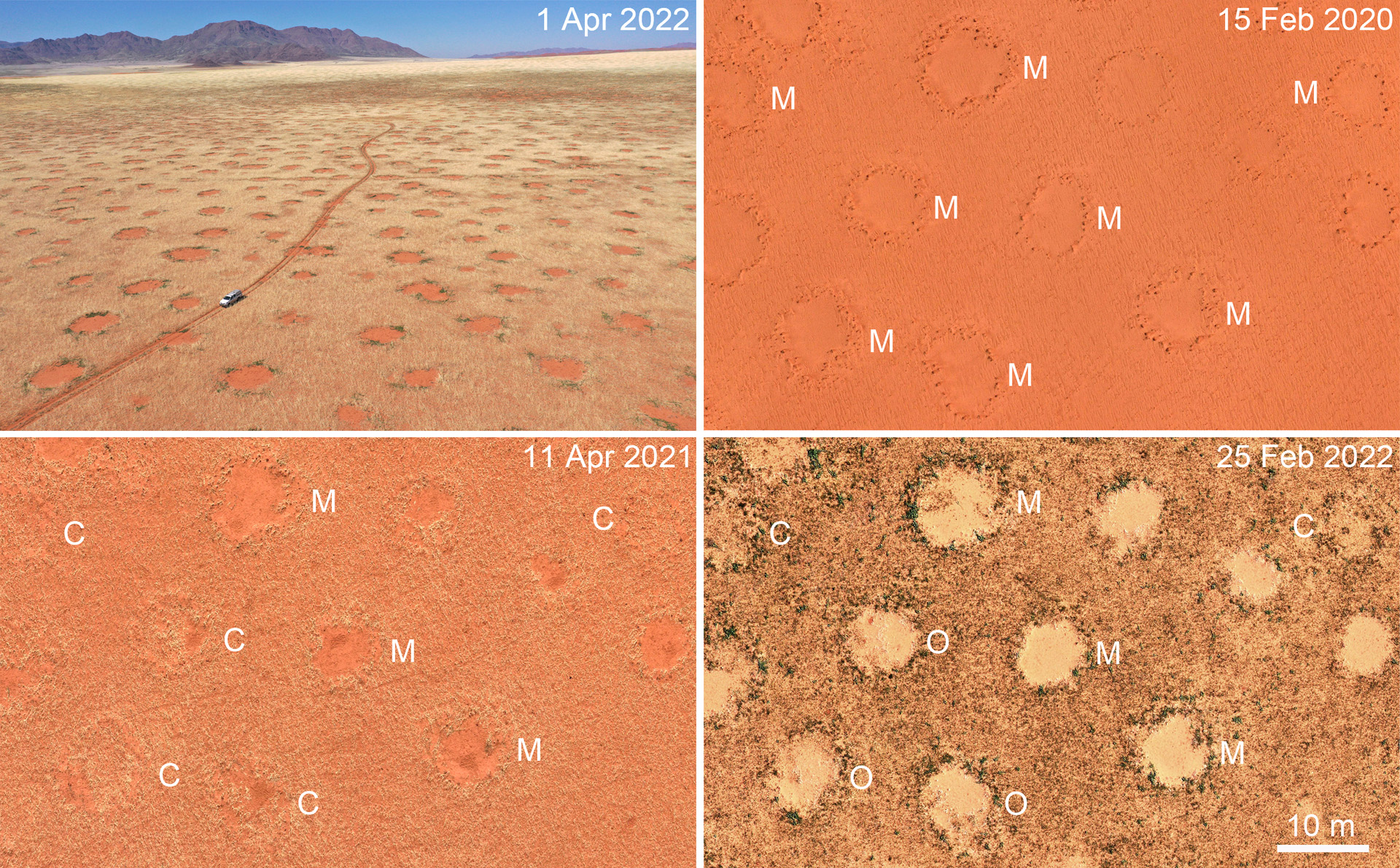Dr. Stephan Getzin | Scientist | Ecologist
Patterns of fairy circles in Namibia are driven by rainfall and soil infiltrability
Fairy circles form a remarkable spatial pattern across hundreds and thousands of meters at various regions of the Namib Desert. We are studying their distribution patterns at the landscape scale since more than ten years and published our first detailed spatial analysis in May 2014. Viewed from the air, fairy circles are an ideal point pattern whose analysis may allow interesting insights into the causal processes that shape these patterns over time. With our new study Spatio‑temporal dynamics of fairy circles in Namibia are driven by rainfall and soil infiltrability, published in June 2024, we present now the first detailed drone survey of Namibian fairy circles.
For this survey, we mapped the fairy circles in eight hotspot regions of the Namib from Garub in the south to the Marienfluss Valley in the north. Our results show that the most regular, spatially periodic, fairy circles occurred in areas with deep aeolian sands where rain water infiltrates very quickly and homogenously across the study plot, which enables the most symmetric competitive interactions between the grasses.
At the NamibRand Nature Reserve in southern Namibia, which is a key area for research on these vegetation gaps, we mapped the formation, disappearance and reopening of fairy circles over four consecutive years from 2020 to 2023. Gaining such high-resolution information in space and time was previously not possible with coarse-resolution satellite images being analyzed at intervals of several years, which was kind of a black box. But the high-resolution drone images showed accurately in how far fairy circles closed with new grass cover and opened up again in subsequent years. The new data show that rainfall and spatial soil-water availability are the main factors that govern the vegetation patterns. After ample rainfall in 2021, up to 58% of all fairy circles closed with grass vegetation while new circles hardly appeared. Disappearing fairy circles were located in areas where there was locally a higher neighborhood density of circles, which act as underground water sources for the surrounding plants, as sometimes also evidenced by so-called grass halos, which result from soil-water diffusion over large distances. Hence, more soil water was available in these local areas which allowed the temporal closing of the fairy circles with grass cover. These results underline the importance of biomass-water feedbacks among the competing plants and they also explain why fairy circles disappear in moister regions east of the Namib, where mean annual precipitation exceeds 150 mm. The study highlights that fairy circles are an expression that there is not enough rainfall in the system to allow a continuous plant cover and that this emergent vegetation pattern is a prime example of plant self-organization that is driven by biomass-water feedbacks and the competition of grasses for limiting water resources.
More than 2400 fairy circles in three 25-ha plots have been drone-mapped at NamibRand Nature Reserve during the years 2020 to 2023. Due to the drought in 2020, only mature circles (M) with a ring of old grass stubble were visible in that year. Many of these circles closed (C) with grass cover in 2021 and partly opened (O) up again in 2022.
Welcome to FAIRY-CIRCLES.info! I am interested in the ecology of drylands, fairy circles, plant rings and all kinds of spatial vegetation and animal patterns, using a whole range of quantitative methods.

